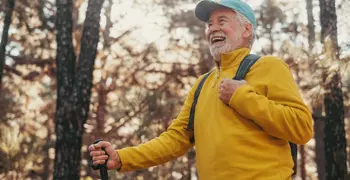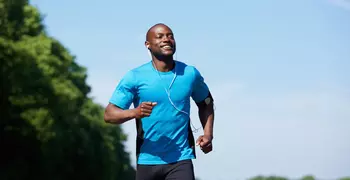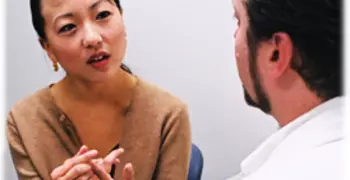How Can Massage Help My Health and Wellbeing?
Generally, people use massage for either general relaxation and wellbeing, or to address a specific complaint, such as pain or limited range of motion. Research suggests massage therapy may contribute to both goals.
Some of the general benefits of massage therapy may include:
- Physical relaxation
- Improved circulation, which nourishes cells and improves waste elimination
- Relief for tight muscles (knots) and other aches and pains
- Release of nerve compression (carpel tunnel, sciatica)
- Greater flexibility and range of motion
- Enhanced energy and vitality
- Some clinical styles may help heal scar tissue as well as tendon, ligament, and muscle tears
What specific conditions can massage therapy help?
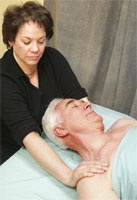 Massage therapy may help the body in many ways. Massage can relax muscle tissue, which may lead to decreased nerve compression, increased joint space, and range of motion. This may lead to reduced pain and improved function.
Massage therapy may help the body in many ways. Massage can relax muscle tissue, which may lead to decreased nerve compression, increased joint space, and range of motion. This may lead to reduced pain and improved function.
Massage therapy may also improve circulation, which enhances the delivery of oxygen and nutrients to muscle cells and helps remove waste products. These circulatory effects of massage may have value in the treatment of some inflammatory conditions, such as arthritis or edema (an excessive accumulation of fluid in body tissues, which may be reduced using manual lymph drainage).
Massage therapy is also thought to induce a relaxation response, which lowers the heart rate, respiratory rate, and blood pressure; boosts the immune system; and generally decreases the physical effects of stress.
These effects suggest that massage may be helpful for a wide range of conditions. Some of these are listed below.
Decreases pain and increases functioning in these conditions:
Helps treat and manage symptoms or complications of:
Other psychological, emotional, and physical benefits:
- Carpal tunnel
- Sciatica
- Tension headaches
- Whiplash
- Scoliosis
- Torticollis
- Tendon and muscle tears
- Thoracic outlet syndrome
- Varicose veins
- Pregnancy-related back pain and other discomfort
- Myofascial pain
- Sore or overused muscles (prevents and treats)
- Muscle injury (offers rehabilitation)
- Gout
- Rheumatoid arthritis
- Osteoarthritis
- Muscular dystrophies
- Raynaud's Disease
- Diabetes
- Hypertension and congestive heart failure
- Reduces risk of chronic diseases, such as heart disease, diabetes, autoimmune diseases
- Improved mood
- Reduced anxiety
- Lower stress levels
- Lessening of depression
- Reduced anger and aggression
- Improved sleep patterns and decreased sleep disturbance
- Reduced fatigue
- Enhances immune system
- Improves athletic performance and enhances recovery
How massage helped Taya relax
Taya is getting married in a week and is feeling a bit overwhelmed by all the planning and upcoming activities. Taya's best friend gives her a gift certificate for a 60-minute massage to help her relax and reduce her stress.
Taya has had clinical massages before that focused on reducing knots in her shoulders and neck.
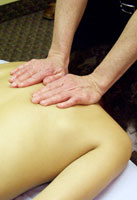 However, during this massage, Taya states that she primarily needs some time to recharge, get centered, rejuvenate, refresh, and float away. Taya chooses the music and type of oil, and she and the therapist agree that the session will be for relaxation only, with no clinical techniques.
However, during this massage, Taya states that she primarily needs some time to recharge, get centered, rejuvenate, refresh, and float away. Taya chooses the music and type of oil, and she and the therapist agree that the session will be for relaxation only, with no clinical techniques.
The therapist suggests that Taya stops thinking about all the things that need to be done, consciously set aside her to-do list, and focus on quieting her mind and relaxing her body by slowing her breathing. To facilitate relaxation, Taya and the therapist agree not to talk.
The massage therapist uses techniques typically used in relaxation massage, such as kneading and passive stretching of muscles in the neck and back, as well as gliding strokes on both the front and back of legs and arms.
At the end of session, Taya is revitalized and confident that she will be able to manage all her tasks before the wedding. To preserve her sense of peace and relaxation, Taya decides not to run errands right away, but to go straight home and relax.
Click to see a video of part of Taya's session.
How massage helped Thomas with his headaches
Thomas is a 60-year old accountant who enjoys fishing, gardening, and baseball. But as tax season approaches and Thomas becomes very busy at work, he doesn't have time for his outside activities, and he notices that he gets more headaches that are more intense.
 In February, after spending the weekend working on a new large account, he can't think clearly because of a very intense headache and stiff neck.
In February, after spending the weekend working on a new large account, he can't think clearly because of a very intense headache and stiff neck.
Thomas calls his regular massage therapist to schedule an appointment. The therapist suggests a combination of clinical trigger point therapy, myofascial release, and relaxation massage.
After the session, Thomas feels a sense of relaxation because his headache is completely gone. He has the energy to go back to the office and complete working on the account. He calls his wife to say he is coming home to take her out to a movie and dinner.
The therapist suggests that Thomas come in once a week throughout his high workload period to counter the effects of stress, sleep loss, and long hours on the computer.
Click to see a video of part of Thomas's session.
How massage helped Martha reduce her pain
Martha is a nurse who has worked 25 years in the public school system and now manages the school nurse program. Her work is extremely stressful because budget cuts have reduced services, and Martha 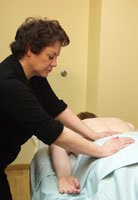 and her employees feel that they aren't meeting the children's needs.
and her employees feel that they aren't meeting the children's needs.
In addition, Martha's elderly mother is ailing, and Martha is largely responsible for providing her care. However, Martha has tremendous physical pain that reduces her ability to care for her mother. She cannot lift or help transfer her mother in and out of bed because of low back pain that radiates down her leg. When she finally goes to a doctor, the diagnosis is sciatica, a type of nerve pain that affects the lower back and legs.
Martha initially goes to a massage therapist to address this pain. The therapist suggests the following types of massage: Swedish relaxation, neuromuscular, myofascial, and trigger point therapy.
The massage therapy sessions bring Martha relief from the physical pain. She finds over time that she is able to assist family members in taking care of her mother. In addition, as she becomes comfortable with the setting and therapist, Martha finds that her massages are a safe time to share her thoughts and feelings.
This time to reflect helps Martha gain energy to make some changes in her life. She finds motivation to make self-care a priority, adds a physical therapist to her health care team, and begins pool therapy to increase her strength.
Click to see a video of part of Martha's session.
How massage helped Chu recover from injury
33 year-old Chu was playing baseball for first time all season. As he slid into home, he collided with the catcher. His arm was pushed away from his body, and he felt pain immediately upon impact. Later, Chu had trouble taking off his sweatshirt. He felt pain when moving his arm and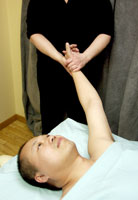 shoulder away from his body and couldn't reach as far as he normally could.
shoulder away from his body and couldn't reach as far as he normally could.
He made an appointment with his doctor, who diagnosed a strain of the rotator cuff muscles. The doctor offered to prescribe muscle relaxants and suggested that Chu rest the arm and take pain medication. The other option the doctor suggested was clinical massage therapy: specifically a 30-minute clinical massage twice a week for three weeks. Chu decided to try massage therapy.
On his first visit, the massage therapist asked about the injury, the level of pain, and what made the pain worse. She suggested the following massage treatments: cross-fiber friction, NeuroMuscular therapy, trigger point therapy, myofascial therapy, and compression of compensatory muscle groups (other back muscles that have to carry the work load due to the injury). She also suggested that Chu apply ice and do some passive stretching.
Chu completed his series of 30-minute sessions twice a week for 3 weeks with icing, stretching, and careful activity between appointments. At the end of the 3 weeks, he experienced significant lessening of pain and greater range of motion. He had no soreness in daily activities and less pain after baseball practice.
Click to see a video of part of Chu's session.
What Amanda needed to do for her back pain
Amanda has a 3-year old and 6-month old twins. While she has always been in good shape and exercises regularly, she had felt some back pain when lifting the twins and had gone for a relaxation massage. Then, when lifting one of the twins out of her car seat, she felt sharp pain that radiated down her right leg. She also had difficulty standing without pain.
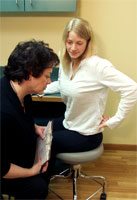 She immediately called the massage therapist and described her symptoms and asked if she could come in that day to help relieve the pain.
She immediately called the massage therapist and described her symptoms and asked if she could come in that day to help relieve the pain.
The therapist instead strongly recommended that Amanda seek medical help right away to get a diagnosis. Amanda followed her advice and an MRI showed a disk related problem, requiring surgery. A few months later, after surgery to repair the disk, Amanda went back to the therapist for post-surgery recovery.
The therapist used trigger-point release and myofascial release to address the surgical area and tight muscles elsewhere and relaxation techniques to help Amanda regain a sense of vitality. Amanda felt an immediate sense of relief and much less pain at the surgical site.
Cherkin DC, Sherman KJ, Deyo RA, Shekelle PG. (2003). A review of the evidence for the effectiveness, safety, and cost of acupuncture, massage therapy, and spinal manipulation for back pain. Ann Intern Med, 138(11):898-906.
Fellowes D, Barnes K, Wilkinson S. (2004). Aromatherapy and massage for symptom relief in patients with cancer. Cochrane Database of Systematic Reviews, Issue 3. Art. No.: CD002287. DOI: 10.1002/14651858.CD002287.pub2.
Fritz, Sandra. (2004). Fundamentals of Therapeutic Massage. St. Louis, MO: Mosby, Inc.
Haraldsson BG, Gross AR, Myers CD, Ezzo JM, Morien A, Goldsmith C, Peloso PM, Bronfort G, Cervical Overview Group. (2006). Massage for mechanical neck disorders. Cochrane Database of Systematic Reviews, Issue 3. Art. No.: CD004871. DOI: 10.1002/14651858.CD004871.pub3.
Yates, John. (2004). A Physician's Guide to Therapeutic Massage, Third Edition. Ontario, Canada: Curties-Overzet Publications Inc.
